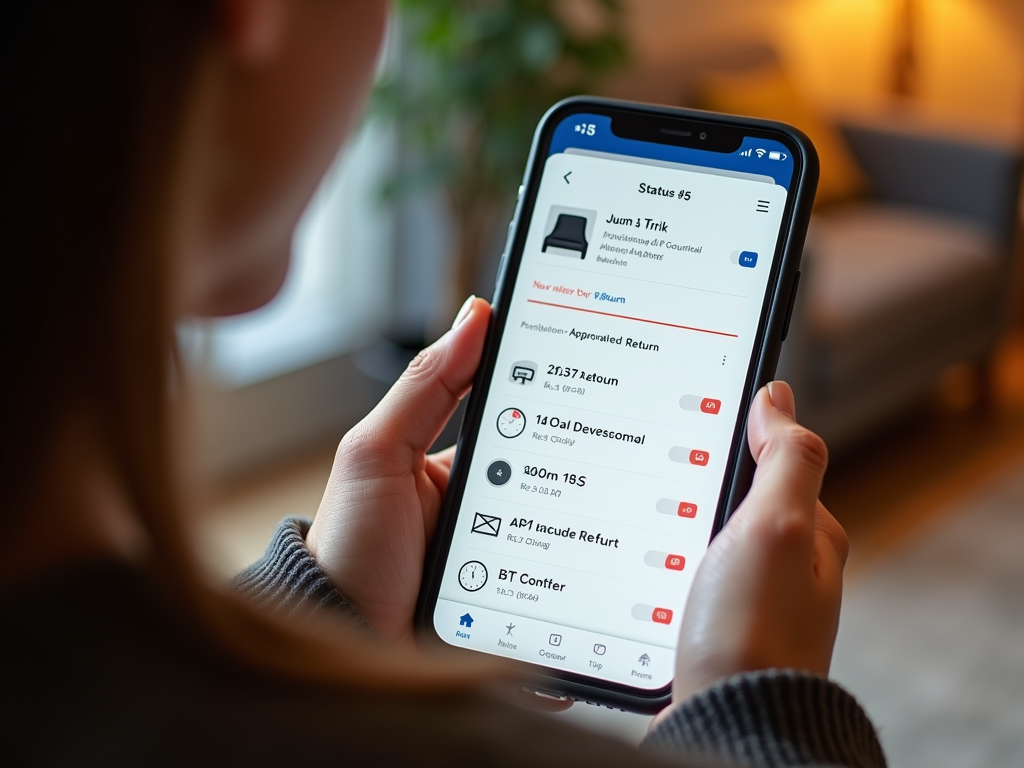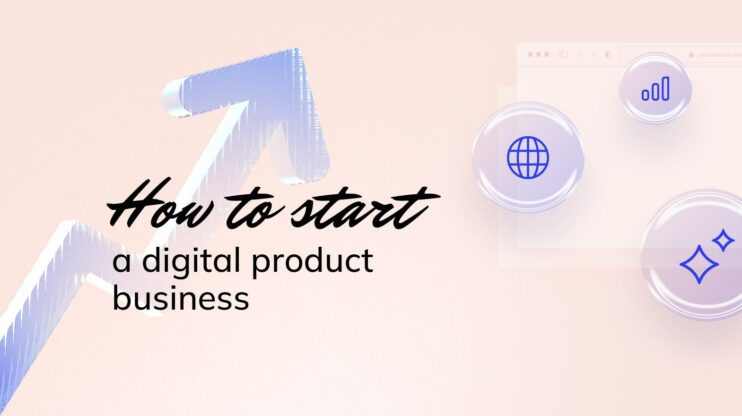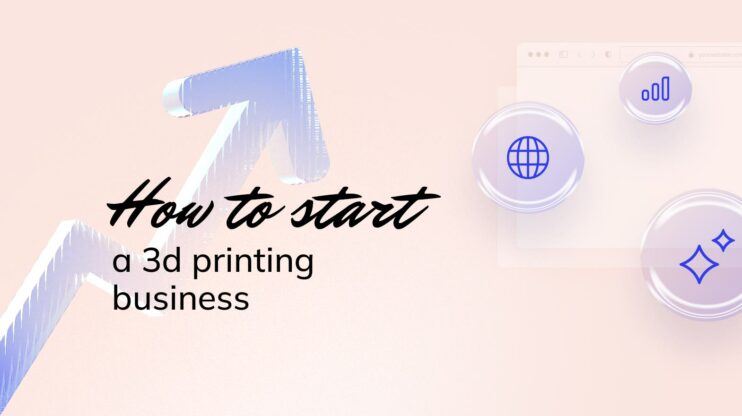Managing product returns is a necessary part of ecommerce. Customers expect quick and seamless refund processes. To meet these expectations and maintain a competitive edge, businesses are turning to ecommerce returns software. This software streamlines the refund process, improves customer satisfaction, and increases operational efficiency. With the growing demand for smooth online shopping experiences, adopting returns software offers an exciting chance to reduce costs, build brand loyalty, and thrive in the ecommerce landscape. In this article, we’ll examine how these tools work and their benefits.

FAQ
What are the top free options available for ecommerce returns software?
Which software is considered the best for managing returns in ecommerce?
How can I manage returns effectively using software solutions?
What features should I look for in ecommerce returns software?
Can ecommerce returns software integrate with other platforms like Shopify or WooCommerce?
What is the average return rate in ecommerce, and how can software help manage it?
How does using returns software improve customer satisfaction and retention?
Are there any user-friendly ecommerce returns solutions suitable for small businesses?

Create your online store in minutes!
Looking to sell online? Develop and launch your store with 10Web AI Ecommerce Website Builder.
What is returns management?
Returns management is the process of handling product returns in ecommerce. It covers everything from when a customer decides to send an item back to when that item is back in stock.
The goal is to make returns easy for customers while keeping costs low for businesses. A good returns system can help you keep customers happy and coming back.
Returns management includes several steps:
- Getting return requests
- Approving returns
- Giving refunds
- Tracking returned items
- Checking returned products
- Putting items back in stock
Understanding ecommerce returns software
Ecommerce returns software helps online retailers manage product returns more efficiently. It automates many parts of the returns process to save time and money while keeping customers happy.
What is ecommerce returns automation?
Ecommerce returns automation uses software to handle product returns for online stores. It lets customers start returns easily on their own. The software then guides them through the process step-by-step.
You can set up rules for which items can be returned and why. The system checks returns against these rules automatically. This cuts down on manual work for your team.
Many tools offer a self-service portal for customers. They can print shipping labels, track returns, and get refunds without contacting support. This makes things faster for shoppers and reduces your workload.
Key features and benefits
Ecommerce returns software comes with several helpful features:
- Automated refunds and exchanges
- Return tracking for customers and staff
- Analytics to spot return trends
- Integration with shipping carriers
- Custom return policies and rules
These features bring big benefits:
- Less manual work for your team
- Faster refunds for customers
- Better inventory management
- Insights to reduce future returns
- Lower shipping and processing costs

Create your online store in minutes!
Looking to sell online? Develop and launch your store with 10Web AI Ecommerce Website Builder.
How it improves customer satisfaction
A smooth returns process makes customers more likely to shop with you again. Ecommerce returns software helps in several ways:
- It gives shoppers multiple return options. They can choose refunds, exchanges, or store credit. Having choices makes customers feel in control.
- The software speeds up refunds and exchanges. Customers don’t have to wait long to get their money back or a new item. This builds trust in your store.
- Self-service tools let customers handle returns on their own time. They don’t need to wait for customer service during business hours. This convenience leads to happier shoppers.
- Clear tracking keeps customers informed at every step. They know when you get their return and when to expect their refund. This cuts down on anxious “where’s my refund” emails to your team.

Create your online store in minutes!
Looking to sell online? Develop and launch your store with 10Web AI Ecommerce Website Builder.
Integrating ecommerce returns software
Connecting returns software with your online store can make handling product returns much easier. It helps speed up the process and keeps customers happy.

Steps for seamless integration
- Choose compatible software: Pick returns software that works with your ecommerce platform and check if it connects directly or needs extra tools.
- Set up the connection: Follow the software’s instructions to link it to your store. This often means adding some code or installing an app.
- Import your product data: Let the returns software access info about your items, which helps it handle returns correctly.
- Create return rules: Set guidelines for what can be returned and how such as time limits and reasons for returns.
- Design the customer interface: Make a simple way for shoppers to start returns like adding clear instructions and options.
- Test the system: Try out the whole return process to catch any problems. Fix issues before going live.

Create your online store in minutes!
Looking to sell online? Develop and launch your store with 10Web AI Ecommerce Website Builder.
Common challenges and solutions
- Syncing data can be tricky, so, make sure your inventory and order info stay up to date in both systems.
- Some shops struggle with refund timing. So, set clear policies on when money goes back to customers.
- Another worry for many sellers is fraud. Use the software’s tools to spot fake returns and protect your business.
- Additionally, creating a system to sort and resell returns quickly helps keeping track of returned items from not getting messy.
- Customer service teams might need training. Teach them how to use the new software to help shoppers.
12 ecommerce returns software worth trying
Different types of ecommerce returns software offer unique features to help businesses manage returns more effectively. In this section, we’ll explore various options, their key benefits, and how they can improve the returns process for both businesses and customers.

1. Loop Returns
Loop Returns helps online stores handle customer returns. It’s made for shops that use Shopify. The software makes returns easier for both stores and shoppers.
With Loop, customers can start returns on their own. Additionally, they can choose to get a refund or swap items, which saves time for customer service teams.
Loop aims to keep more money in the store’s pocket. It does this by offering exchanges instead of just refunds. This can lead to happier customers who might buy again.
The platform also helps with tasks like printing labels and tracking packages. This can make the whole return process smoother for everyone.
Many big Shopify ecommerce stores use Loop Returns. It’s good for clothing, shoes, and other items that often get returned.
| Pros | Cons |
| Easy for customers to use | Only works with Shopify stores |
| Saves time for store staff | Can be pricey for small shops |
| Helps keep more sales through exchanges | May need time to set up correctly |
2. Narvar Returns
Narvar offers returns management software for ecommerce businesses. You can use it to make returns easier for your customers. The software gives shoppers a portal to start returns. It also helps you track returned items.
With Narvar, you can offer different return options. These include exchanges, store credit, and refunds. You can even set up label-free or box-free returns. Some customers may be able to get home pickup for their returns.
This tool works with many ecommerce platforms. It can connect to various shipping carriers too. Narvar aims to cut down on customer questions about returns. It does this by sending updates about return status.
Ecommerce brands of all sizes use Narvar. It’s popular with both big companies and smaller ecommerce stores. Retailers who want to improve their return process often choose this software.
| Pros | Cons |
| Easy-to-use customer portal | May be pricey for small businesses |
| Offers multiple return options | Requires integration with existing systems |
| Works with many ecommerce platforms | Can be complex to set up at first |

Create your online store in minutes!
Looking to sell online? Develop and launch your store with 10Web AI Ecommerce Website Builder.
3. Happy Returns
Happy Returns makes ecommerce returns easier. You can return items without boxes or labels at over 10,000 drop-off spots. These include many UPS Store locations.
The company’s software helps online stores manage returns better. It lets shoppers get refunds or exchanges right away when they drop off items. This makes customers happier.
Happy Returns works with big brands like Rothy’s and Everlane. It’s good for online stores that want to give shoppers a smooth return process. The service is handy for customers too. Most people in the U.S. live close to a return spot.
| Pros | Cons |
| Easy, box-free returns | Not available everywhere |
| Quick refunds | Depends on store partnerships |
| Many drop-off locations | May have fees for some returns |
4. ZigZag Global
ZigZag Global is a software platform that helps online stores manage product returns. The company aims to make returns easier for both shoppers and retailers.
ZigZag’s software connects to many popular ecommerce systems. It lets stores set up custom return portals for their customers. You can use it to offer different return options like exchanges or store credit.
The platform works with shipping companies around the world. This gives shoppers more choices for how to send items back. ZigZag also provides data to help stores understand why products are being returned.
Many types of online retailers use ZigZag. It’s helpful for clothing stores, electronics sellers, and other ecommerce businesses. The software is designed to work for companies of all sizes, from small shops to big brands.
| Pros | Cons |
| Easy integration with ecommerce platforms | May have a learning curve for new users |
| Global shipping options | Pricing not publicly available |
| Customizable return portals | Might be too complex for very small businesses |
5. Hive
Hive is a software solution that can help you manage ecommerce returns. It offers features to make the returns process smoother for both you and your customers.
With Hive, you can set up a branded returns portal. This lets your customers start returns on their own, without needing to contact support. Additionally, the portal can show different return options, like mailing items back or dropping them off at a store.
Hive also has tools to help prevent returns. You can use it to check shipping addresses before orders go out, which cuts down on packages that come back because of wrong addresses.
The software gives you data about your returns. You can see why items are being sent back and spot patterns. This info helps you make changes to reduce future returns.
Hive works for online stores of various sizes. It’s useful for brands that want to improve their returns process and keep customers happy.
| Pros | Cons |
| Easy-to-use returns portal | May have a learning curve |
| Address validation feature | Pricing is not listed on the website |
| Detailed returns data | Might be too complex for very small businesses |
6. ReturnLogic
ReturnLogic is a software tool that helps online stores manage customer returns. It works with popular platforms like Shopify and BigCommerce.
The software lets you set up a custom returns portal for your customers, which makes it easy for them to start the return process on their own.
ReturnLogic also helps your customer service team. They can use it to handle returns, exchanges, and warranties more quickly.
For warehouse staff, the software can automate parts of the returns process. This saves time and reduces mistakes. On the other hand, ReturnLogic collects data about your returns., which you can use to spot trends and make smarter choices about your products.
The main users of ReturnLogic are online retailers. It’s useful for businesses of all sizes that want to improve how they handle returns.
| Pros | Cons |
| Makes returns easier for customers | May have a learning curve for staff |
| Saves time for customer service teams | Could be pricey for small businesses |
| Provides useful data about returns | Might not fit all types of products |

Create your online store in minutes!
Looking to sell online? Develop and launch your store with 10Web AI Ecommerce Website Builder.
7. ReBOUND Returns
ReBOUND Returns is a software platform for managing ecommerce returns. It helps online retailers handle product returns more efficiently. The software offers features to streamline the returns process. You can create branded return portals and automate refunds. ReBOUND also provides data on return reasons to help improve your products.
Many fashion and clothing ecommerce stores use ReBOUND Returns. It’s popular with mid-sized to large ecommerce businesses that have high return rates.
ReBOUND aims to make returns easier for both retailers and customers. It can help you process returns faster and get items back in stock quicker.
| Pros | Cons |
| Faster refund processing | May be too complex for small businesses |
| Detailed return analytics | Pricing not readily available |
| Customizable return portals | Some features may require tech setup |
8. EasyPost Returns
EasyPost offers return management solutions for ecommerce businesses. You can create return labels easily through their API. These labels are scan-based, meaning you only pay when they’re used. This applies to USPS, FedEx, and UPS shipments.
EasyPost partners with return management software platforms to improve shipping operations. With EasyPost, you can set up a self-service portal for customers to start returns. This portal can be customized to fit different return policies, including warranties and gift returns.
The system provides a centralized backend for teams to manage returns. This makes it easier to receive merchandise, process refunds, and handle exchanges.
| Pros | Cons |
| Scan-based labels save money | Limited to certain carriers |
| Customizable return portal | Requires API integration |
| Centralized management system | May need additional software |
9. Return Rabbit
Return Rabbit is a returns management platform for Shopify stores. It helps online shops handle customer returns more easily. The software turns returns into a chance to keep customers happy and make more money.
With Return Rabbit, you can set up automatic processes for returns. This saves time for your team. Customers can start returns on their own through an online portal. They can choose to exchange items instead of getting refunds.
The platform gives you data about your returns. You can see which products get returned most often. This helps you make smart choices about your inventory.
Return Rabbit works well for different types of Shopify stores. Small businesses and big brands can both use it. It’s good for shops that sell clothes, accessories, or home goods.
| Pros | Cons |
| Easy for customers to use | Only works with Shopify stores |
| Encourages exchanges over refunds | May have a learning curve for new users |
| Gives useful data about returns | Pricing not listed on website |
10. ReturnBear
ReturnBear is a return management platform for ecommerce businesses. It helps simplify the returns process for online retailers and their customers.
You can use ReturnBear to set up an automated returns system. This lets shoppers start returns easily through an online portal. The software handles the logistics of processing and tracking returned items.
ReturnBear offers both digital and physical return solutions. Their network of return locations gives customers convenient drop-off options. This can reduce shipping costs for merchants.
The platform aims to make returns more efficient. It can help you save time and money on reverse logistics. You may be able to cut down on return fraud too.
ReturnBear works for businesses of different sizes. It’s used by ecommerce brands selling various products. The software is helpful for companies dealing with cross-border returns.
| Pros | Cons |
| Automated returns process | May have integration limits |
| Physical drop-off locations | Pricing not listed publicly |
| Can reduce return costs | Might not suit all business types |

Create your online store in minutes!
Looking to sell online? Develop and launch your store with 10Web AI Ecommerce Website Builder.
11. LateShipment.com
LateShipment.com helps online stores manage their returns process. You can use it to set up self-serve returns for your customers. This means shoppers can start a return on their own without contacting support.
The software lets you create rules for how returns are handled. You can offer exchanges or store credit instead of refunds. This may help keep more revenue in your business.
LateShipment.com works with ecommerce platforms like Shopify. It can automatically generate return shipping labels for customers. The system also gives you reports on return trends.
Many online retailers use this tool to save time on returns. It can cut down on customer service tickets about returns. The software aims to make returns easier for both shoppers and store owners.
| Pros | Cons |
| Self-serve returns for customers | May have a learning curve to set up |
| Automated return workflows | Could be pricey for small businesses |
| Options for exchanges and store credit | Relies on integration with other systems |
12. AfterShip
AfterShip is a popular returns software for online stores. It helps you manage returns easily in one place. You can see all your returns and process them faster.
With AfterShip, you can approve or reject returns quickly. This saves time and cuts down on mistakes. You can also spot suspicious returns and stop fraud.
The software lets you track return performance. You’ll know which items come back most often. This info helps you make smart choices for your store.
AfterShip works well with other ecommerce tools. It syncs with platforms like Shopify to make refunds smoother. You can even set up automatic refunds or gift cards.
| Pros | Cons |
| Easy to manage all returns in one place | May have a learning curve for new users |
| Quick approval process | Some features only work with specific platforms |
| Helps reduce return fraud | Pricing may be high for small businesses |
Conclusion
Ecommerce returns software has become an indispensable tool for businesses aiming to meet customer expectations and optimize their operations. By streamlining the refund process, these solutions not only improve customer satisfaction but also reduce costs and improve overall efficiency. As the ecommerce landscape continues to evolve, investing in returns software is a strategic move that can drive long-term success, build customer loyalty, and keep businesses ahead of the competition.











